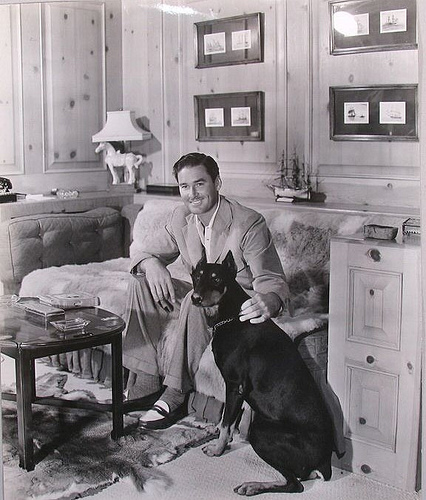Dear Errol Fans,
The year was 1905. L.D. Baker had his monumental hotel, and pretty much anything else he wanted. (that money could buy) These were indeed 'the days of salad and sun' for everyone involved. Banana traders were said to light their Havana cigars with $5 bills and there seemed to be no end in sight. The large collection of managers, overseers, accountants, speculators, etc. bought up most of the rest of the property in the Titchfield peninsula to construct homes close to where the 'action' was. Almost all of these structures were 'knock-down' houses. In those days you could order an entire 3 story house to be delivered by ship. The house had been constructed, the planks and timbers carefully labeled and numbered and then 'knocked down', packed in shipping containers with intricate instructions concerning how to re-assemble it, tips on laying the foundation and even the nails, shingles and paint! As a testament to how well they were designed, most of them are still standing, although quite the worse for wear.
The Titchfield was an almost instant worldwide hit and a short list of the rich and famous to visit the hotel read thus: J. Pierpoint Morgan,(who came by his private yacht)William Randolph Hearst, Paul Whiteman, Rudyard Kipling, Clara Bow, Bette Davis, and Ginger Rodgers. The Titchfield was said to be the finest hotel 'this side of the Atlantic' when it came to administering to the pleasure and conveniences of traveler's. Baker even built his own hospital in the hills above Port Antonio complete with rooms for patients, a large covered veranda so the sick could convalesce while breathing the fresh air, and even a state of the art operating room. This 'hospital' still exists by the way. Now it is the “Bonnieview Hotel”. The veranda makes a very nice dining area and the 'operating theatre' is now the fancy dining room!
Guests had a variety of things to do, if they wanted: Excursions into the Blue Mtn's, Reach Falls(then known as 'Reich falls') the waters at Bath spa, and even rafting down the Rio Grande on a United Fruit banana raft. Yes, I'm sorry fellow fans, Errol did not invent that particular recreational activity(photo) but he did revive it after 40+ yrs.
All this stress was not good for L.D. Baker. He was the kind of person who wanted to 'micro-manage' everything he could. A brass plated 'type A' personality if you will, and in 1908 it caught up with him in the form of a massive stroke. He was transported back home to CT where he soon died of heart failure. This had the effect of throwing a monkey wrench into the works. Baker's eldest son took over the reins but by all accounts he just wasn't up to the job. Then a virulent disease virtually wiped out the Banana crops and a completely new strain of disease resistant banana had to developed and planted. Then in 1929 the growers banded together and formed the Jamaica Banana Producers Association with the help of the JA government and toppled the stranglehold that the United Fruit Co. had on the banana trade. To top it all off, The Great Depression in 1930 all but killed off the tourism trade and in the coming years the very real threat of German submarine activity dealt a knockout blow to casual tourism in the area. The hotel slipped into disrepair and one evening in 1936 a fire, which was said to have started in the kitchen area, almost burned the Titchfield to the ground and by all accounts, would have done just that except for divine intervention, i.e. a large tropical deluge of a rain storm (of which the area is famous for, in terms of 140 in.per year) opened up and helped drown out the blaze.
For almost 6 months, Baker's son weighed the options he had before him, i.e. Tear the remaining structure down or rebuild. Cash flow was a serious problem by that time and the partners of the Co. were threatening a hostile takeover. On the other hand, about half of the original hotel remained and after all, the Titchfield was L.D. Baker's dream. So, Baker's son made the sentimental, if not the business choice. The hotel would be rebuilt using as much of the original as possible to save money. The design would be art-deco (after a fashion) and a new bar and pool would be built on the N.end. The end result was a sort of mish-mash and had none of the grandeur of the big Titchfield, but it would have to do.
Not only the look, but the function of the hotel changed quite drastically also. Once the playground for wealthy Americans, now the bulk of the guests were British middle aged and older pensioners and dowagers who took up year-round residency at the hotel. Also in attendance was a fairly large group of individuals that for one reason or another had embarrassed their families or were one step ahead of the Crown Courts and the Bailey and had been whisked off to the 'Island Colony's' to avert further trouble. It was very much “London South” with tea and biscuits, croquet, cricket and 'The Times and The Thames'. Guests would 'dress for dinner' and the English breakfast was obligatory.
It was in this most unlikely scenario, this very proper, quiet and British atmosphere that a wild, hell raising, hard drinking, silver tongued devil of a Hollywood actor and his equally wild, outrageous(some have said even more so) and curvaceous under-aged Lolita of a girlfriend burst into the scene with all the subtlety and graciousness of an atomic explosion. I think we all know who that person and his 'companion' were, eh? The sparks and fur were sure to fly.(and did, in spades)
Next in the final installment: Errol and 'Company' shake the place to it's foundation.
— john


